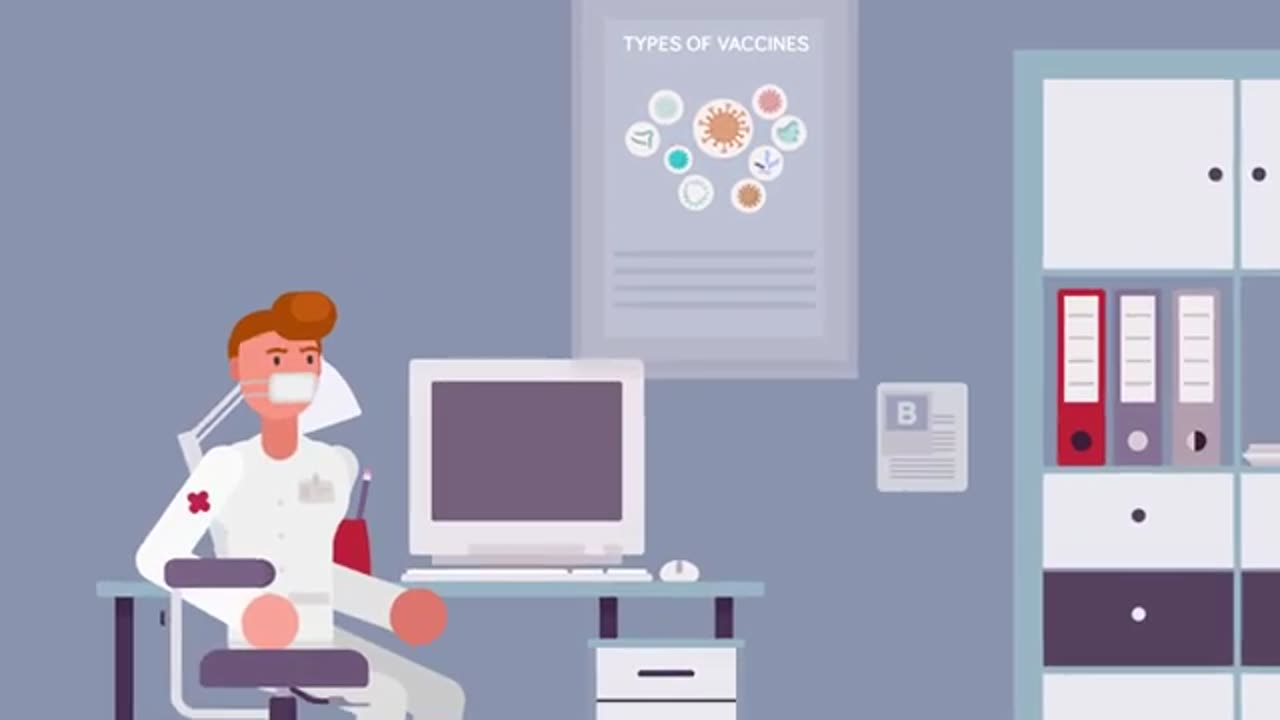Premium Only Content

How are vaccines actually made
In 1900, infectious diseases like pneumonia, flu, and tuberculosis were the leading causes of death in the US, with a life expectancy of just over 47 years. By 2010, chronic diseases like cancer and heart disease became the leading causes of death, with life expectancy extending to nearly 79 years, thanks to improved sanitation and medical advances like vaccines.
Bacteria and viruses are both microorganisms that can cause diseases in humans. Bacteria are hardy organisms that can reproduce on their own and can be treated with antibiotics. Viruses need a host to survive and reproduce, making them difficult to kill once inside the body. Vaccines contain a killed or weakened version of a pathogen and stimulate an immune response to prevent infection. The immune system's innate and adaptive responses work together to fight off pathogens and create memory cells for future protection.
Vaccines have been instrumental in eradicating diseases like smallpox and nearly eliminating polio. They can be live attenuated, inactivated, subunit, conjugate, toxoid, or provide passive immunity. Herd immunity, achieved through widespread vaccination, protects vulnerable populations who cannot be vaccinated. Creating vaccines is costly and complex, but they remain one of the most important medical advances in history.
-
 3:07:41
3:07:41
TheNateVibez
17 hours ago#1 Streamer in Kentucky👀 - T-800 Road to Rank Domination✌ - ArmyVet🫡
124K2 -
 4:03:05
4:03:05
EXPBLESS
17 hours agoHAPPY FORTNITE SUB SUNDAY - SUB GOAL {8-50} #RUMBLEGAMING
102K2 -
 9:19
9:19
VSiNLive
1 day agoYou MUST Consider These 3-LEG PARLAYS for Super Bowl LIX!
133K6 -
 9:21:08
9:21:08
Scottish Viking Gaming
20 hours ago💚Rumble :|: Sunday Funday :|: If you can't Beat them...EAT THEM!!
115K4 -
 1:46:47
1:46:47
Game On!
1 day ago $15.75 earnedExpert Super Bowl LIX Picks, Preview, and Best Bets!
192K16 -
 36:50
36:50
Mrgunsngear
1 day ago $32.75 earnedPresident Trump's Executive Order To The ATF: This Could Be Huge!
156K87 -
 25:48
25:48
Adam Does Movies
1 day ago $4.73 earnedTop 10 Reasons Why Emilia Pérez Is Complete TRASH!
103K7 -
 26:56
26:56
MYLUNCHBREAK CHANNEL PAGE
1 day agoUnder The Necropolis - Pt 6
240K64 -
 6:03
6:03
Tactical Advisor
2 days agoEverything New From Panzer Arms 2025
61.1K3 -
 1:15:59
1:15:59
CarlCrusher
1 day agoUFOs & Paranormal Phenomena are Not Imaginary | Dr Jim Segala MUPAS Phase 2
59.2K3